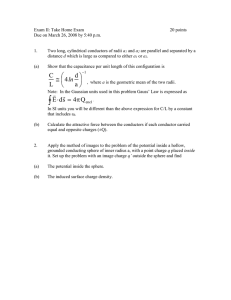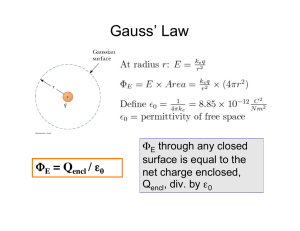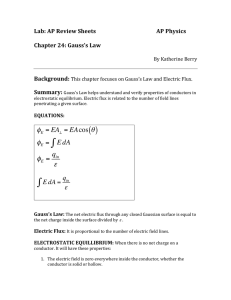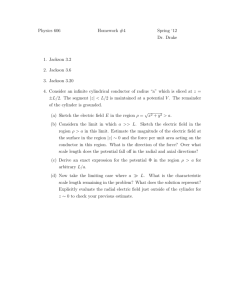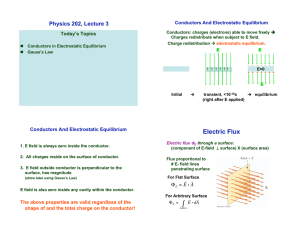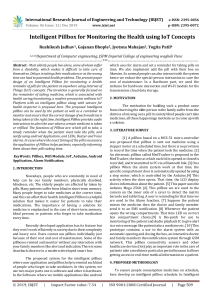Physics 21 Fall, 2012 Gauss`s Law 1 Pick a gaussian surface S 2
advertisement
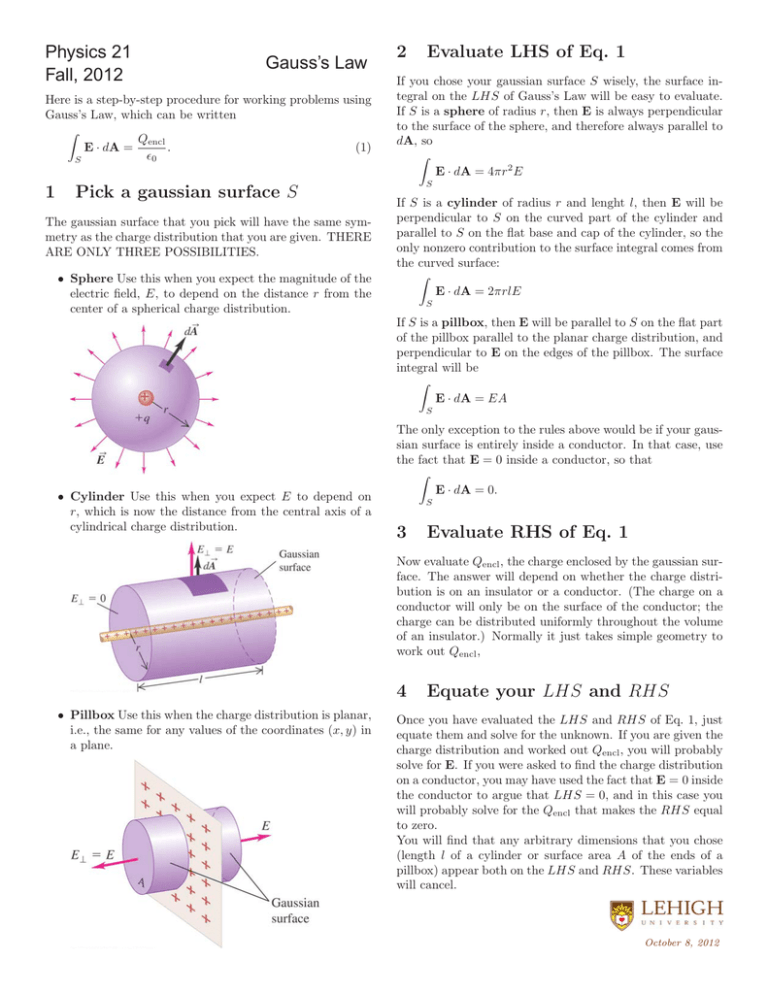
Physics 21 Fall, 2012 Gauss’s Law Here is a step-by-step procedure for working problems using Gauss’s Law, which can be written Qencl E · dA = . (1) 0 S 1 Pick a gaussian surface S The gaussian surface that you pick will have the same symmetry as the charge distribution that you are given. THERE ARE ONLY THREE POSSIBILITIES. • Sphere Use this when you expect the magnitude of the electric field, E, to depend on the distance r from the center of a spherical charge distribution. 2 Evaluate LHS of Eq. 1 If you chose your gaussian surface S wisely, the surface integral on the LHS of Gauss’s Law will be easy to evaluate. If S is a sphere of radius r, then E is always perpendicular to the surface of the sphere, and therefore always parallel to dA, so E · dA = 4πr2 E S If S is a cylinder of radius r and lenght l, then E will be perpendicular to S on the curved part of the cylinder and parallel to S on the flat base and cap of the cylinder, so the only nonzero contribution to the surface integral comes from the curved surface: E · dA = 2πrlE S If S is a pillbox, then E will be parallel to S on the flat part of the pillbox parallel to the planar charge distribution, and perpendicular to E on the edges of the pillbox. The surface integral will be E · dA = EA S • Cylinder Use this when you expect E to depend on r, which is now the distance from the central axis of a cylindrical charge distribution. The only exception to the rules above would be if your gaussian surface is entirely inside a conductor. In that case, use the fact that E = 0 inside a conductor, so that E · dA = 0. S 3 Evaluate RHS of Eq. 1 Now evaluate Qencl , the charge enclosed by the gaussian surface. The answer will depend on whether the charge distribution is on an insulator or a conductor. (The charge on a conductor will only be on the surface of the conductor; the charge can be distributed uniformly throughout the volume of an insulator.) Normally it just takes simple geometry to work out Qencl , 4 • Pillbox Use this when the charge distribution is planar, i.e., the same for any values of the coordinates (x, y) in a plane. Equate your LHS and RHS Once you have evaluated the LHS and RHS of Eq. 1, just equate them and solve for the unknown. If you are given the charge distribution and worked out Qencl , you will probably solve for E. If you were asked to find the charge distribution on a conductor, you may have used the fact that E = 0 inside the conductor to argue that LHS = 0, and in this case you will probably solve for the Qencl that makes the RHS equal to zero. You will find that any arbitrary dimensions that you chose (length l of a cylinder or surface area A of the ends of a pillbox) appear both on the LHS and RHS. These variables will cancel. October 8, 2012
